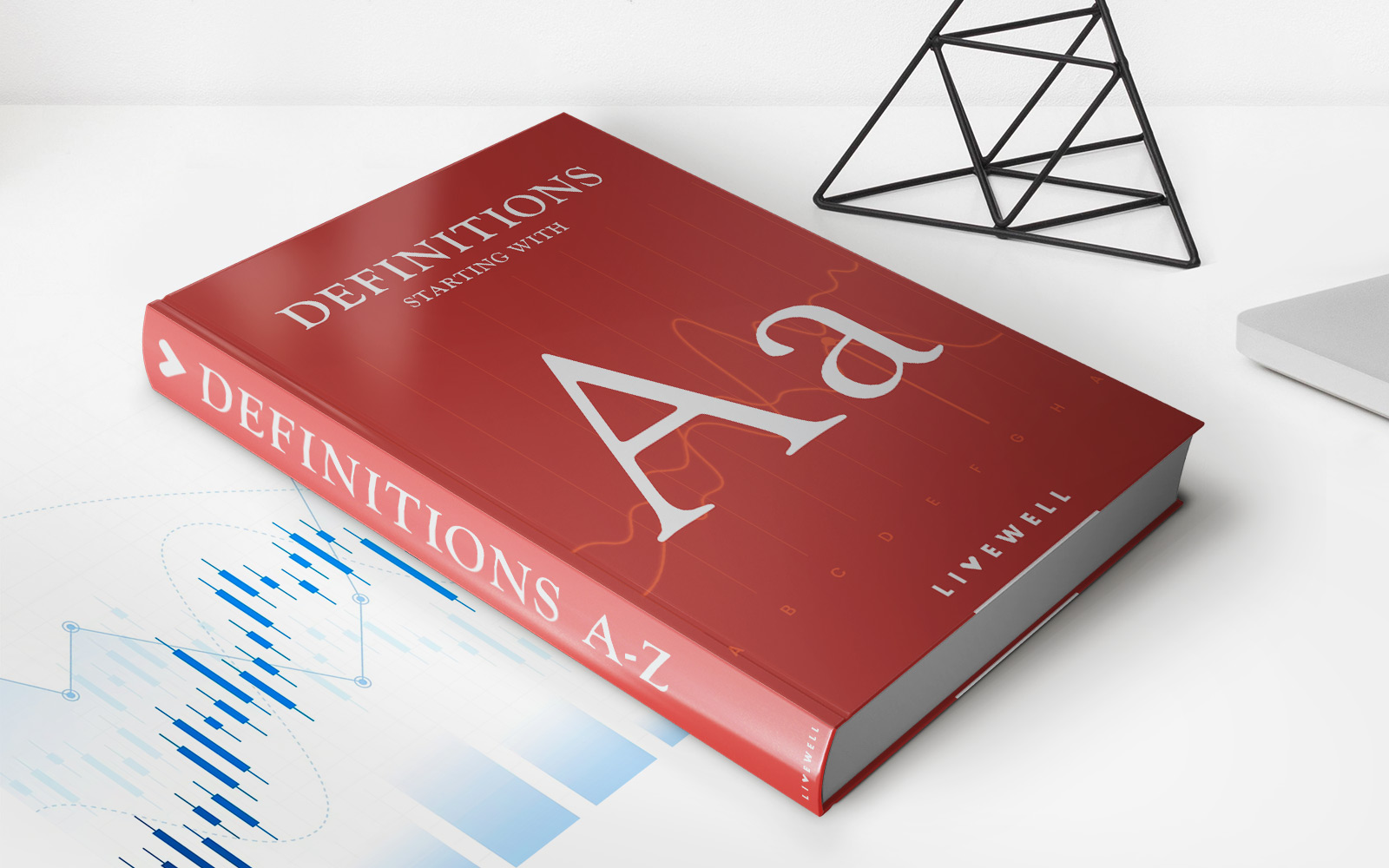Home>Finance>How Long Is The Loan Grace Period On Subsidized Loans?


Finance
How Long Is The Loan Grace Period On Subsidized Loans?
Published: February 20, 2024
Learn about the grace period for subsidized loans and how it affects your finances. Understand the loan terms to manage your finances effectively.
(Many of the links in this article redirect to a specific reviewed product. Your purchase of these products through affiliate links helps to generate commission for LiveWell, at no extra cost. Learn more)
Table of Contents
Introduction
Understanding the Grace Period on Subsidized Loans
When it comes to financing higher education, many students and their families turn to federal student loans to bridge the gap between college expenses and available resources. Among the various types of federal student loans, subsidized loans stand out as a popular choice due to their borrower-friendly terms and features. One such feature is the grace period, which provides a vital cushion for borrowers as they transition from student life to the workforce.
In this article, we'll delve into the specifics of subsidized loans, shedding light on the grace period they offer. Understanding the nuances of this grace period is crucial for borrowers, as it can significantly impact their financial planning and loan repayment strategy. By exploring the length, benefits, and implications of the grace period on subsidized loans, readers will gain valuable insights into managing their student debt responsibly.
Throughout this discussion, we'll also touch on the broader landscape of student loan repayment, offering a holistic view of the options available to borrowers once the grace period concludes. Whether you're a current student contemplating your loan choices or a recent graduate preparing to navigate the world of loan repayment, this article aims to equip you with the knowledge needed to make informed financial decisions regarding your subsidized loans.
Understanding Subsidized Loans
Subsidized loans are a type of federal student loan designed to provide financial assistance to undergraduate students with demonstrated financial need. These loans offer favorable terms, including a fixed interest rate that is typically lower than private student loans. One distinguishing feature of subsidized loans is that the U.S. Department of Education pays the interest on the loan while the borrower is enrolled at least half-time in school, during the grace period, and during any authorized deferment periods. This interest subsidy sets subsidized loans apart from their unsubsidized counterparts, offering a valuable cost-saving benefit to borrowers.
Eligibility for subsidized loans is determined based on the student’s financial need, which is evaluated through the Free Application for Federal Student Aid (FAFSA) process. The amount a student can borrow in subsidized loans is capped and may not exceed their financial need. As a result, subsidized loans serve as a targeted form of financial aid, specifically tailored to support students from lower-income households in pursuing their higher education goals.
Unlike unsubsidized loans, which are available to both undergraduate and graduate students regardless of financial need, subsidized loans are exclusively offered to undergraduate students with documented financial need. This distinction underscores the government’s commitment to providing accessible and affordable higher education opportunities to students facing financial barriers.
By understanding the unique benefits and eligibility criteria of subsidized loans, prospective borrowers can make informed decisions about their student loan options, ultimately paving the way for a more manageable and financially sustainable college experience.
Loan Grace Period
One of the key advantages of subsidized loans is the inclusion of a grace period, which offers borrowers a valuable window of time before they are required to begin repaying the loan. The grace period serves as a transitional phase, allowing students to adjust to post-graduation life, seek employment, and establish a solid financial foundation before taking on the responsibility of loan repayment.
During the grace period, borrowers are not obligated to make any payments on their subsidized loans, and no interest accrues on the loan balance. This interest subsidy sets subsidized loans apart from their unsubsidized counterparts, offering a valuable cost-saving benefit to borrowers.
It’s important to note that the grace period on subsidized loans is a temporary reprieve, and borrowers should use this time wisely to prepare for the upcoming loan repayment obligations. By understanding the terms and conditions of the grace period, borrowers can proactively plan their financial strategy and explore the various repayment options available to them.
Overall, the grace period on subsidized loans serves as a crucial buffer, providing borrowers with the breathing room they need to transition from student life to the workforce without immediate financial strain. This feature exemplifies the borrower-friendly nature of subsidized loans and underscores the government’s commitment to supporting students as they embark on their post-graduation journey.
Length of Grace Period
The length of the grace period on subsidized loans is a pivotal factor that directly influences borrowers’ post-graduation financial planning. Typically, the grace period for federal subsidized loans extends for six months after the borrower graduates, leaves school, or drops below half-time enrollment status. This six-month timeframe offers a reasonable window for borrowers to secure employment, adjust to their new financial responsibilities, and explore their repayment options without the immediate pressure of loan payments.
It’s important for borrowers to be aware of the specific end date of their grace period, as this information directly impacts the commencement of their loan repayment. By understanding the length of the grace period, borrowers can strategically align their job search and financial preparations to ensure a smooth transition into the repayment phase.
Additionally, borrowers should take advantage of the grace period to familiarize themselves with the terms of their subsidized loans, assess their overall financial situation, and explore various repayment plans offered by federal loan servicers. This proactive approach empowers borrowers to make well-informed decisions regarding their loan repayment, ultimately contributing to a more manageable and sustainable financial future.
While the standard grace period for subsidized loans is six months, it’s essential for borrowers to stay informed about any changes or updates to this timeframe, as regulations and policies related to student loans may evolve over time. By staying attuned to the specifics of their grace period, borrowers can navigate the post-graduation transition with confidence and financial prudence.
Benefits of Loan Grace Period
The grace period accompanying subsidized loans offers a range of benefits that play a crucial role in supporting borrowers as they transition from student life to the workforce. Understanding and leveraging these benefits can significantly impact borrowers’ financial well-being and loan repayment experience.
1. Financial Breathing Room: The grace period provides borrowers with a valuable buffer, allowing them to focus on securing employment and adjusting to their new financial responsibilities without the immediate burden of loan payments. This breathing room can alleviate initial post-graduation stress and facilitate a smoother transition into the workforce.
2. Time for Financial Planning: During the grace period, borrowers have the opportunity to assess their financial situation, create a budget, and explore various repayment plans offered by federal loan servicers. This dedicated time for financial planning empowers borrowers to make informed decisions about their loan repayment strategy, setting the stage for long-term financial stability.
3. Interest Subsidy Continuation: Throughout the grace period on subsidized loans, the U.S. Department of Education continues to cover the interest accruing on the loan balance. This ongoing interest subsidy represents a significant cost-saving benefit for borrowers, as it prevents the loan balance from growing during the grace period.
4. Loan Repayment Education: The grace period serves as an educational phase during which borrowers can familiarize themselves with the terms of their subsidized loans, understand the implications of various repayment options, and seek guidance on managing their student debt. This proactive approach to loan repayment education can empower borrowers to navigate the post-graduation phase with confidence and financial acumen.
5. Smooth Transition into Repayment: By utilizing the grace period effectively, borrowers can lay the groundwork for a seamless transition into the repayment phase. This includes exploring income-driven repayment plans, understanding loan consolidation options, and preparing to meet their future loan obligations with clarity and foresight.
Overall, the grace period on subsidized loans offers a host of benefits that extend beyond the temporary relief from loan payments. It serves as a strategic opportunity for borrowers to fortify their financial foundation, gain insights into loan repayment strategies, and embark on their post-graduation journey with confidence and financial prudence.
Repayment Options
As the grace period on subsidized loans draws to a close, borrowers are presented with a range of repayment options designed to accommodate diverse financial circumstances and income levels. Understanding these repayment options is essential for borrowers seeking to manage their student debt responsibly and sustainably.
1. Standard Repayment Plan: Under the standard repayment plan, borrowers make fixed monthly payments over a 10-year period. This traditional approach ensures that the loan is paid off within a reasonable timeframe, albeit with higher monthly payments compared to other plans.
2. Graduated Repayment Plan: The graduated repayment plan starts with lower monthly payments that gradually increase over time. This option is beneficial for borrowers expecting their income to rise steadily in the future, allowing for a more manageable initial repayment phase.
3. Income-Driven Repayment Plans: Income-driven repayment plans, such as Income-Based Repayment (IBR), Pay As You Earn (PAYE), Revised Pay As You Earn (REPAYE), and Income-Contingent Repayment (ICR), adjust monthly payments based on the borrower’s income and family size. These plans offer flexibility for borrowers facing financial challenges, ensuring that loan payments remain affordable based on their current financial situation.
4. Loan Consolidation: Borrowers have the option to consolidate their federal student loans into a Direct Consolidation Loan, which combines multiple loans into a single loan with a single monthly payment. Loan consolidation can streamline repayment and potentially extend the repayment term, resulting in lower monthly payments.
5. Public Service Loan Forgiveness (PSLF): Borrowers working in qualifying public service jobs may be eligible for loan forgiveness after making 120 qualifying monthly payments under a qualifying repayment plan while working full-time for a qualifying employer.
By familiarizing themselves with these repayment options and assessing their individual financial situation, borrowers can select a repayment plan that aligns with their income, career trajectory, and long-term financial goals. Additionally, federal loan servicers provide guidance and resources to assist borrowers in navigating the complexities of loan repayment, ensuring that they make informed decisions tailored to their specific needs.
Conclusion
As borrowers navigate the terrain of subsidized loans and the accompanying grace period, it becomes evident that these financial tools offer invaluable support and flexibility, particularly during the critical post-graduation phase. The grace period serves as a bridge, providing borrowers with the time and space needed to lay the groundwork for responsible loan repayment and long-term financial well-being.
By understanding the nuances of subsidized loans and the grace period, borrowers can leverage these benefits to their advantage, setting the stage for a smoother transition into the workforce and the subsequent phase of loan repayment. The interest subsidy, financial breathing room, and array of repayment options collectively empower borrowers to approach their student debt with confidence and strategic foresight.
As the grace period draws to a close, borrowers are equipped with a diverse toolkit of repayment options, ranging from standard and graduated plans to income-driven repayment and loan consolidation. This array of choices reflects the government’s commitment to providing borrowers with flexible and tailored solutions, ensuring that loan repayment remains manageable and aligned with individual financial circumstances.
Ultimately, the grace period on subsidized loans represents more than just a temporary respite from loan payments; it symbolizes a proactive opportunity for borrowers to engage in financial planning, educate themselves about loan repayment strategies, and embark on their post-graduation journey with clarity and purpose. By embracing this phase with diligence and foresight, borrowers can position themselves for long-term financial success and responsible management of their student debt.
As borrowers prepare to transition into the repayment phase, it’s essential for them to leverage the resources and guidance offered by federal loan servicers, empowering them to make well-informed decisions and navigate the complexities of loan repayment with confidence. Through proactive financial planning and a thorough understanding of their options, borrowers can embark on their post-graduation journey with a solid foundation and a clear path toward financial stability.














